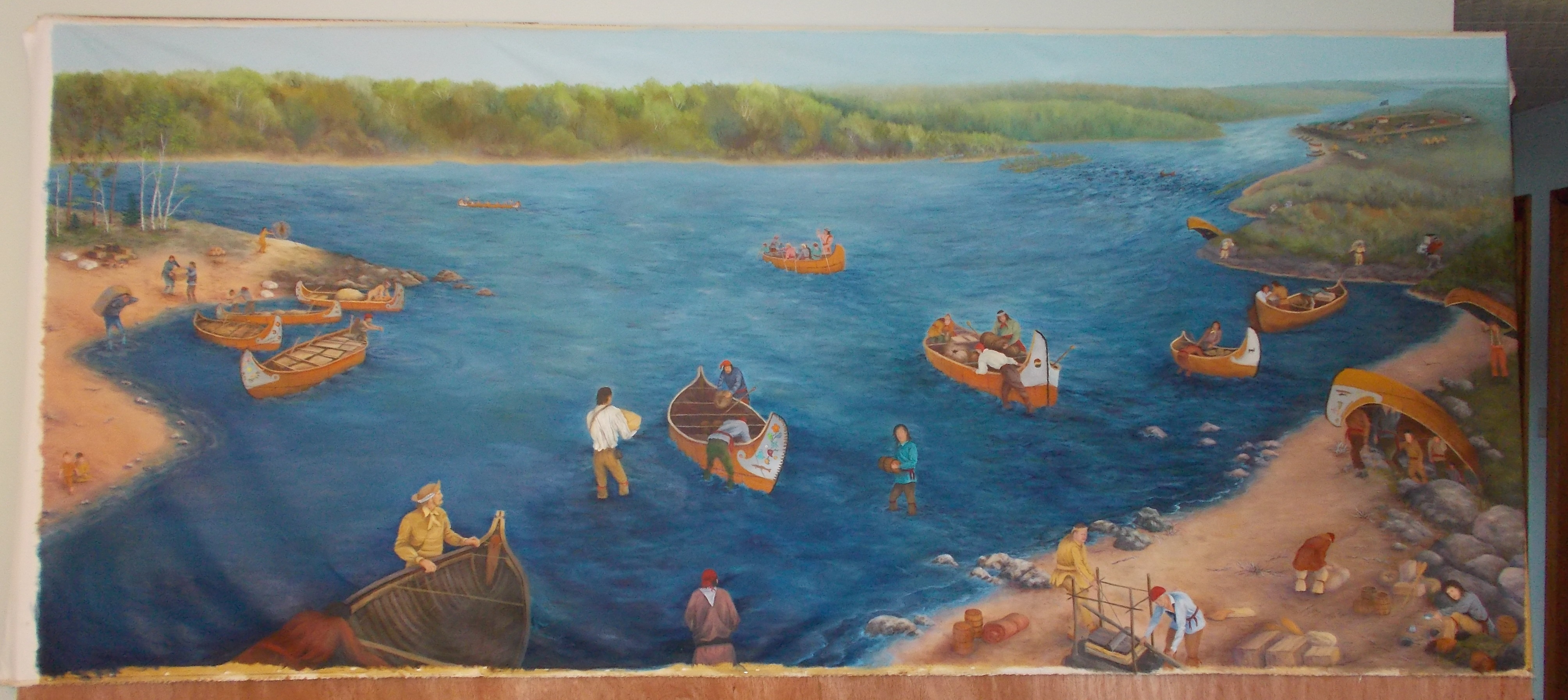Local artist Jeanne Tubman created the depiction of 18th century voyageurs above the rapids of the St. Marys River. By 1750, the indigenous people of the Lake Superior region, the Anishinabeg (also known as Ojibwa), had been trading with the French for a century. European goods such as axes, flintlocks, kettles, cloth, and beads came from Montrèal. Beaver pelts and other animal skins were the principal articles traded to the French. Furs headed for Montrèal were packed in bales weighing 90 pounds. A voyageur and an Ojibwa are shown in the right foreground compressing furs to make such a bale.
Canoes of different sizes are shown. The largest, a “Montrèal canoe” was 36 feet long, weighed about 600 pounds, and carried four tons of cargo, crew, and provisions. Several voyageurs are shown portaging such a canoe, likely headed for Grand Portage, on western Lake Superior. (The painting is not intended to be to scale). On a portage, the sturdy voyageurs sometimes carried two of the 90-pound bales at once – on a downstream, the temptation to avoid portaging was strong! So, depending on conditions, canoes sometimes did run down the St. Marys Rapids.
Fort Rèpentigny in the upper right on the mural, was built by the French in 1751 to provide help to the French traders and voyageurs passing through, to maintain relations with the Anishinabeg, and prevent the English from gaining a foothold here. The French and Indian Was started three years later. By 1760 the English had taken both Montrèal and Quèbec City, and soon were the European power in this area.

